Joint Hypermobility: Are you loose or are you tight?
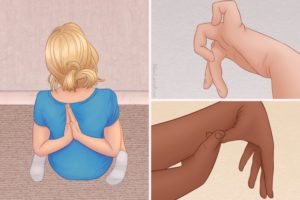 Joint Hypermobility is a common thread among most people I work with.
Joint Hypermobility is a common thread among most people I work with.
Hypermobility is a condition characterized by excessive joint mobility beyond the normal range of motion.
While it is usually associated with loose ligaments and flexible joints, it’s important to know that not all individuals with joint hypermobility experience the same physical traits.
Some may have lax ligaments and loose muscles, but there is another subset of individuals with hypermobility whose muscles compensate for their loose ligaments by becoming excessively tight.
People in this category often don’t know that they are hypermobile because they are tight in certain areas and that tightness makes you think that you must be tight all over.
And doctors often see the body through a similar lens.
When I started doing yoga in my 30s, my ability to do full splits and put my feet behind my head was lauded.
With no alignment instruction— and three knee surgeries later— I finally came to understand that this semi-gift I was born with could also be a curse.
The classic understanding of joint hypermobility involves lax ligaments.
Ligaments are the connective tissues responsible for holding joints together and providing stability. Ligaments connect bones to bones.
In individuals with hypermobility and lax ligaments, the joints tend to move beyond the normal range of motion with too much ease.
This increased mobility often presents itself as the ability to bend or contort joints farther than most people, leading to a wide range of possible joint positions.
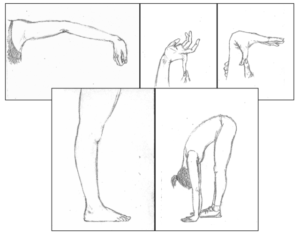
There are some classic signs of joint hypermobility:
- The ability to place the hands flat on the floor with ease.
- Hyperextended knees or elbows.
- The wrist and thumb can be moved downward so the thumb touches the forearm.
- The little fingers can be extended back beyond 90 degrees.
Hypermobility Is A Blessing And A Curse
While hypermobility with lax ligaments can have advantages— flexibility is generally awesome and it is great to do yoga tricks— it also comes with its own set of challenges.
The instability of joints can lead to recurring joint dislocations, chronic pain, and increased susceptibility to injuries.
Proper management through physical therapy, joint stabilization exercises, and lifestyle modifications are crucial for individuals who find themselves in this category.
It is essential to maintain joint integrity and prevent further complications.
Contrary to the conventional understanding of hypermobility, there is a lesser-known side to this condition that involves individuals with joint hypermobility who actually possess tight muscles.
I am someone with loose joints, loose ligaments, and long muscles. This is what allows me to do my yoga tricks (for which I am forever grateful).
In the case of some people, the muscles surrounding hypermobile joints become excessively tight and rigid in an attempt to compensate for the lack of stability provided by the ligaments.
This compensatory mechanism of tight muscles aims to provide additional support and stability to the joints affected by hypermobility. Whether or not it succeeds is another story.
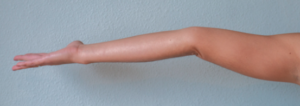
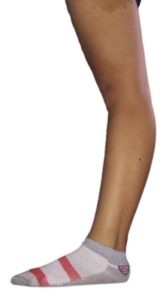
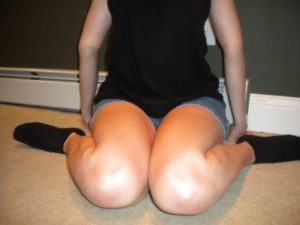
It is a blessing when you know you fall into the category and you have help figuring out how to work with it.
It is a curse when your body breaks down and no one is diagnosing you correctly.
You can’t imagine the shock on some of my client’s faces when I tell them they are way looser in their joints than they ever believed.
Tons of hypermobile people suffer with very tight hamstrings and equally tight hips.
This type of muscle tension and lack of flexibility from muscle tightness in response to joint hypermobility can lead to a whole host of problems.
The Riddle Of Being Both Loose And Tight
The muscle tightness that often manifests in the hips, quadriceps, and hamstrings makes having good posture and good movement patterns difficult.
Having good posture, which means aligning the bones correctly, is essential to supporting hypermobility.
This is easier said than done.
It’s important to understand that hypermobility exists on a spectrum, with individuals falling at different points along the range.
Some people may exhibit a combination of lax ligaments and tight muscles, experiencing the challenges associated with both aspects.
For example, I can hyperextend my knees and put my hands in prayer behind my back with ease but I cannot hyperextend my elbows.
Others may have varying degrees of joint hypermobility with either loose ligaments or tight muscles as the predominant feature.
Each case requires a tailored approach to management and care.
This often leads to a problem when it comes to diagnosis and treatment.
Given the diverse presentations of hypermobility, it is often overlooked when searching for a diagnosis of chronic pain issues.
But the symptoms often fly under the radar of many professionals.
Comprehensive assessment, considering factors such as joint range of motion, muscle tone, and other associated symptoms are often disregarded in issues of chronic pain.
An accurate diagnosis would not only help determine the underlying cause of joint hypermobility but could also guide the formulation of an effective treatment plan.
If you are someone who is hypermobile it is important to focus on things that many people can simply take for granted.
Posture is key but so is the way you walk and run. Where someone with well toned ligaments can get away with poor technique and performance not everyone can.
Muscle tone is another absolute key.
If you are someone like me that is loose all over you need to focus on strength work that tightens the muscles that surround the joints.
Before my knee surgeries, if I laid on my back with my legs extended my feet would fall all the way open. Now they fall about halfway and the difference is tremendous.
Someone with loose ligaments but tight muscles needs to stretch and loosen those muscles but also test other muscles to determine tone.
Like I said, the hips, quads, and hamstrings often tighten up but other core muscles can easily remain weak.
When we are hypermobile it is super key for all of our muscles to be balanced and toned.
And It is important everyone’s plan should be personalized to address the specific needs and limitations of the individual.
